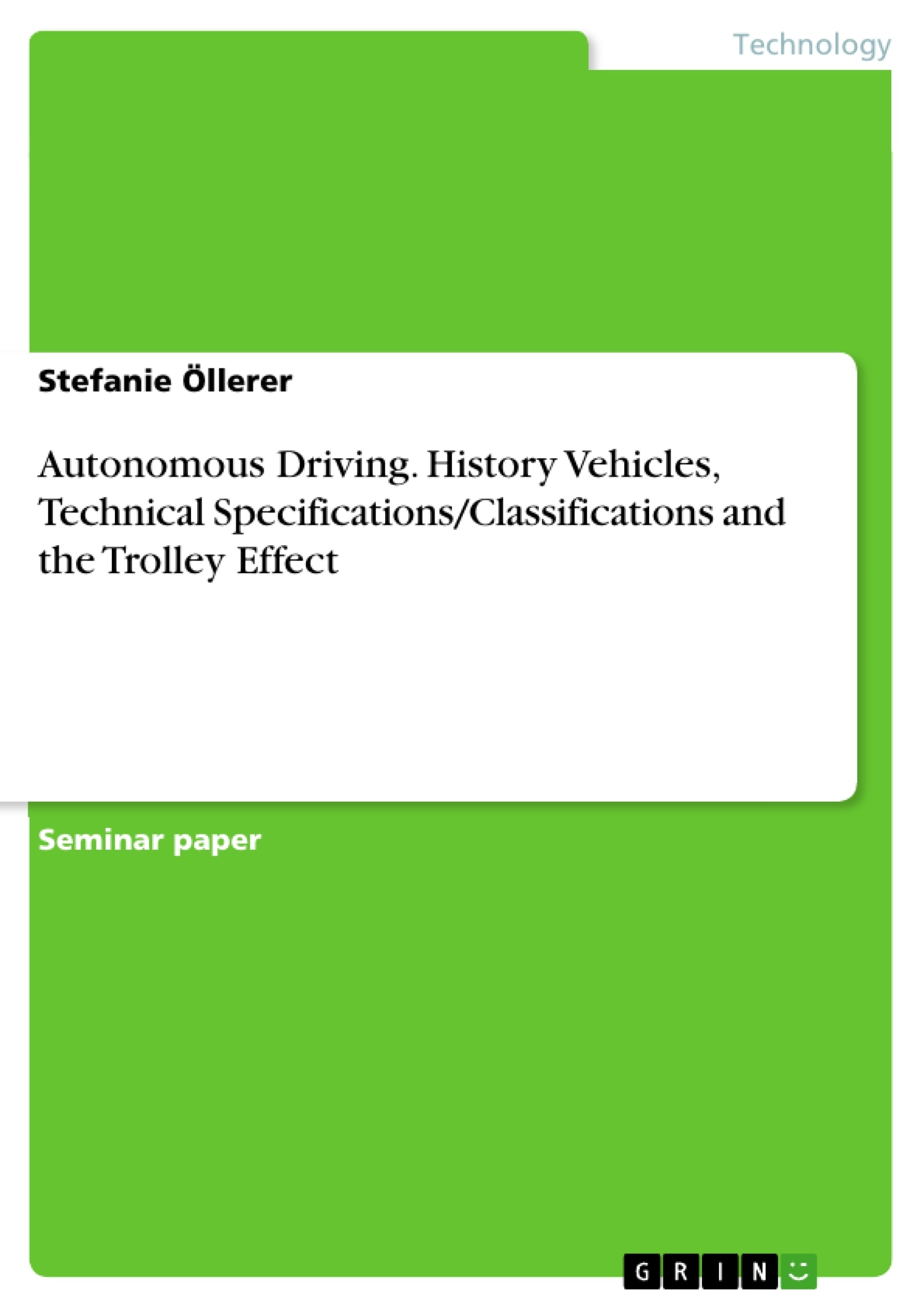The whole world is constantly evolving. Before the 17th century, mechanics and electricity were not invented for mankind. Many discoveries and inventions have been an enrichment for the human life in the last 300 years, but also many are gratuitous or even endangered. New technologies are not only available to assist people's activities or to produce commodities, but they are and will be of much more value in the future. For the first ten years of the 21st century, the masses had been guaranteed unimaginable technical advances and the continuing possibilities of self thinking processes in metal. It is named Artificial Intelligence, in short AI. But this engineering marvel is not yet fully functional. The machine cannot think on its own so an ethnic decision comes from the developer. However “Artificial Intelligence is the key for autonomous driving" and revolutionized the transport sector in all aspects. This journey to a complete automated infrastructure, whose development is beyond all questions, will affect our lives. An enormous number of experts will be required for the designing and upkeeping of the new cars.
Inhaltsverzeichnis (Table of Contents)
- Introduction
- History of Vehicles
- Technical Classifications
- The Next Generation
- Technical Specifications for Autonomous Driving
- Handling of Hindrances
- The Future of Transport
Zielsetzung und Themenschwerpunkte (Objectives and Key Themes)
This text explores the emergence of autonomous driving and its potential impact on the transport sector, society, and the future of work. It provides a historical overview of vehicles and their development, delves into the technical specifications and challenges of autonomous driving, and considers the societal implications of this technological shift.
- The history and development of vehicles
- The technical specifications and challenges of autonomous driving
- The social and economic impacts of autonomous driving
- The future of transport in a world of autonomous vehicles
- The role of artificial intelligence in autonomous driving
Zusammenfassung der Kapitel (Chapter Summaries)
- Introduction: This chapter introduces the topic of autonomous driving and its potential for revolutionizing the transport sector. It highlights the importance of artificial intelligence and its role in enabling self-driving vehicles.
- History of Vehicles: This chapter explores the historical development of vehicles, from the use of horses to the invention of the steam car and the rise of the internal combustion engine. It examines key innovations and milestones in the evolution of transportation technology.
- Technical Specifications for Autonomous Driving: This chapter delves into the technical aspects of autonomous driving, focusing on the sensors, algorithms, and systems that enable vehicles to perceive their surroundings, make decisions, and navigate autonomously.
- Handling of Hindrances: This chapter examines the challenges and obstacles that autonomous vehicles face, including unexpected road conditions, weather, and pedestrian behavior. It explores how these challenges are being addressed through technological advancements and regulatory frameworks.
- The Future of Transport: This chapter discusses the potential impact of autonomous driving on the future of transport, including the development of smart cities, changes in traffic patterns, and the emergence of new mobility services.
Schlüsselwörter (Keywords)
This text focuses on the key concepts of autonomous driving, artificial intelligence, transport technology, societal impact, and future trends. It explores the history and evolution of vehicles, technical specifications of autonomous vehicles, challenges and solutions in the field, and the potential for future developments.
- Quote paper
- Stefanie Öllerer (Author), 2023, Autonomous Driving. History Vehicles, Technical Specifications/Classifications and the Trolley Effect, Munich, GRIN Verlag, https://www.grin.com/document/1363671



